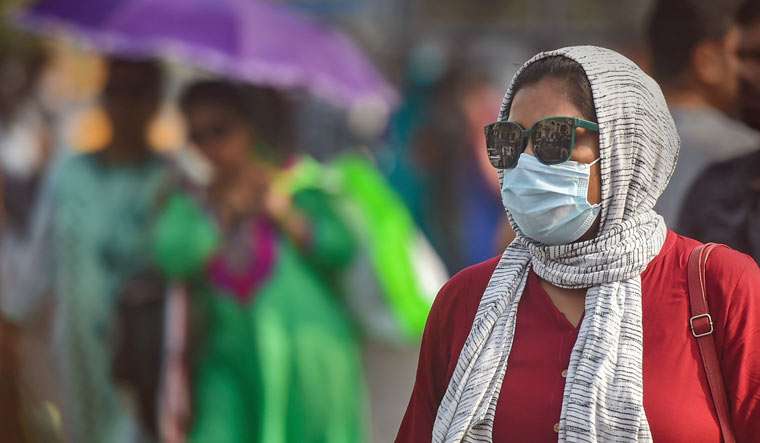Of late there has been an increase in viral infections. A new COVID strain (JN.1) was identified in the USA in September. The evolving nature of respiratory diseases in general remains a challenge for the public health system but experts say there is no need to panic.
In the recent spate of viral infection cases, what are the common symptoms and how similar/dissimilar are they from what was witnessed during the COVID pandemic?
There has been a rise in viral infections in 2024, particularly respiratory illnesses. A breakdown of symptoms reveals the following:
· Common symptoms across viruses: Fever, cough, fatigue, runny or stuffy nose, sore throat, muscle aches.
· Similarities to COVID-19: All these symptoms can be present in COVID-19.
· Dissimilarities to COVID-19: Gastrointestinal issues like nausea, vomiting, and diarrhoea are more common with viruses like norovirus than COVID-19.
· Loss of taste/smell is less common now but COVID-19 can cause this more frequently than other viruses.
However, these are general comparisons, and specific symptoms can vary. Getting tested is the best way to identify the exact virus.
What is the possible cause behind the rise of viral infections?
It could either be seasonal viruses like influenza (flu) or Respiratory syncytial virus (RSV). It could also be a new variant of a flu strain- like the one reported by the Centre for Disease Control (USA) in 2024. We need more information before drawing conclusions.
Is a full blown pandemic a possibility?
With most people being vaccinated or having had COVID already, a full-blown pandemic seems less likely. But new variants are always a possibility, so we can't be complacent. There is no need to panic, but definitely be aware. If you are feeling under the weather, get tested and isolate if you need to.
What are some of the precautions we can take?
Let us not ditch those masks just yet, especially in crowded places or if you’re around people at higher risk. Regular handwashing and avoiding touching your face are still your best friends. Vaccination and prior infections offer some immunity but new variants can always emerge.
A doctor’s orders include rest, fluids, and medicines to manage symptoms like fever and cough. There is no one-size-fits-all treatment.
How has the landscape of respiratory illnesses changed?
For decades, tuberculosis (TB) reigned supreme. However while TB remains a significant public health concern, it is now joined by a growing number of respiratory foes, including pneumonia, influenza, and the recent addition of COVID-19. This rise in diagnoses is partly due to advancements in diagnostic tools and heightened awareness, particularly following the emergence of COVID-19.
How have treatments changed?
Efforts to combat tuberculosis have been multifaceted, ranging from vaccination programs to antibiotic treatments. The BCG vaccine, despite variable efficacy in different studies, has played a crucial role in raising awareness about TB and bolstering immune responses. While a robust vaccine for TB prevention remains elusive, antibiotic treatments have proven highly effective. Drugs like Streptomycin, Rifampicin, and Isoniazid have revolutionized TB treatment. The introduction of oral short drug regimes significantly improving patient outcomes. Moreover, initiatives like Directly Observed Treatment, Short-course (DOTS) have simplified treatment protocols and made them more accessible, even in private clinics through government initiatives.
However, treating and preventing respiratory illnesses, particularly TB and pneumonia, pose significant challenges, especially in vulnerable populations. TB treatment necessitates strict adherence over a minimum of six months, presenting compliance issues. Additionally, accurate diagnosis, especially for drug-resistant TB, requires specialized expertise. Pneumonia, on the other hand, demands immediate attention due to its acute onset and virulence, often affecting high-risk populations disproportionately. Overcrowding and poor ventilation exacerbate the spread of these diseases, necessitating robust governmental strategies and public-private collaborations.
What about the new range of respiratory illnesses?
Beyond TB, a diverse range of respiratory illnesses are gaining prominence. Viral, fungal, and zoonotic infections are on the rise, often attributed to human encroachment on natural habitats. This increased interaction with animal reservoirs exposes humans to novel pathogens (disease causing organism). Some of these infections spread rapidly, potentially reaching epidemic proportions within short periods. While gender bias appears minimal, these illnesses disproportionately affect children, the elderly, homeless populations, and those residing in poorly ventilated spaces. Children can act as vectors, transmitting infections to vulnerable grandparents within the household. This underscores the importance of vaccination programs for high-risk groups, including vaccinations against pneumonia and flu for the elderly.
The evolving nature of respiratory diseases presents ongoing challenges for public health. Efforts to combat these illnesses require a multifaceted approach, encompassing vaccination, antibiotic treatments, and targeted interventions to address the needs of vulnerable populations. By fostering awareness, education, and collaboration, we can strive towards mitigating the burden of respiratory diseases on a global scale.



